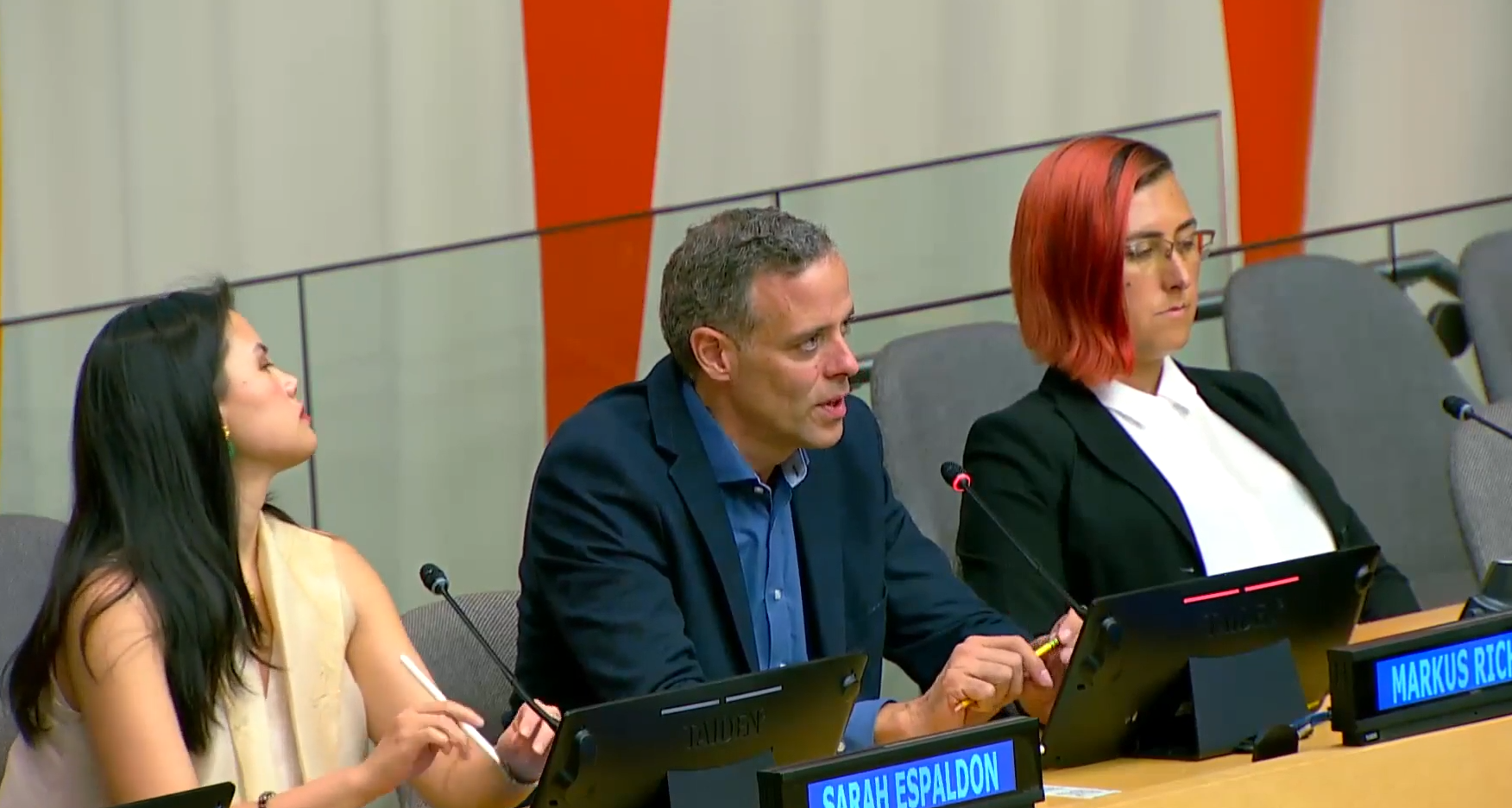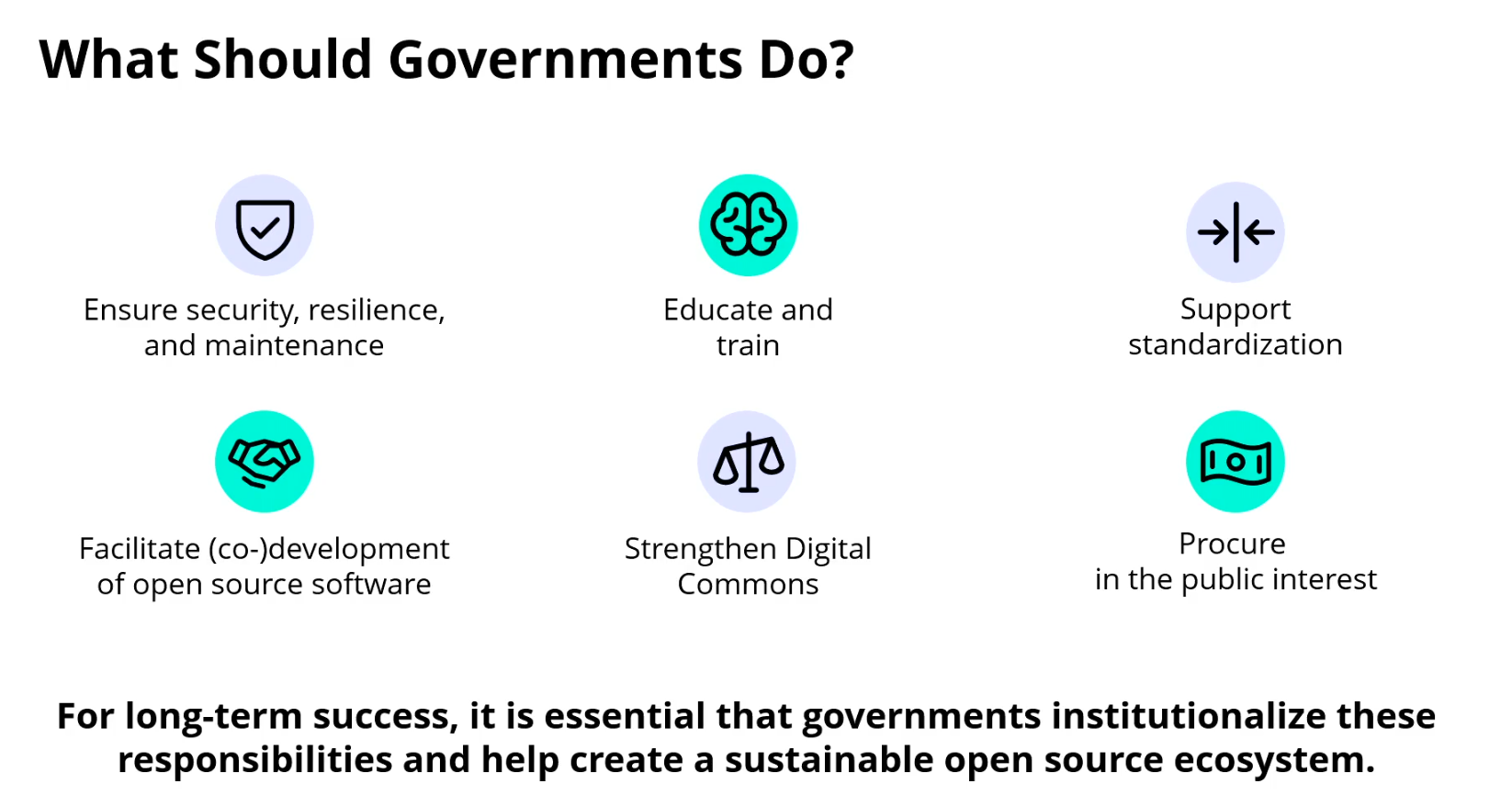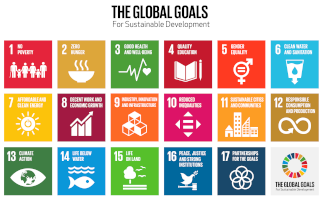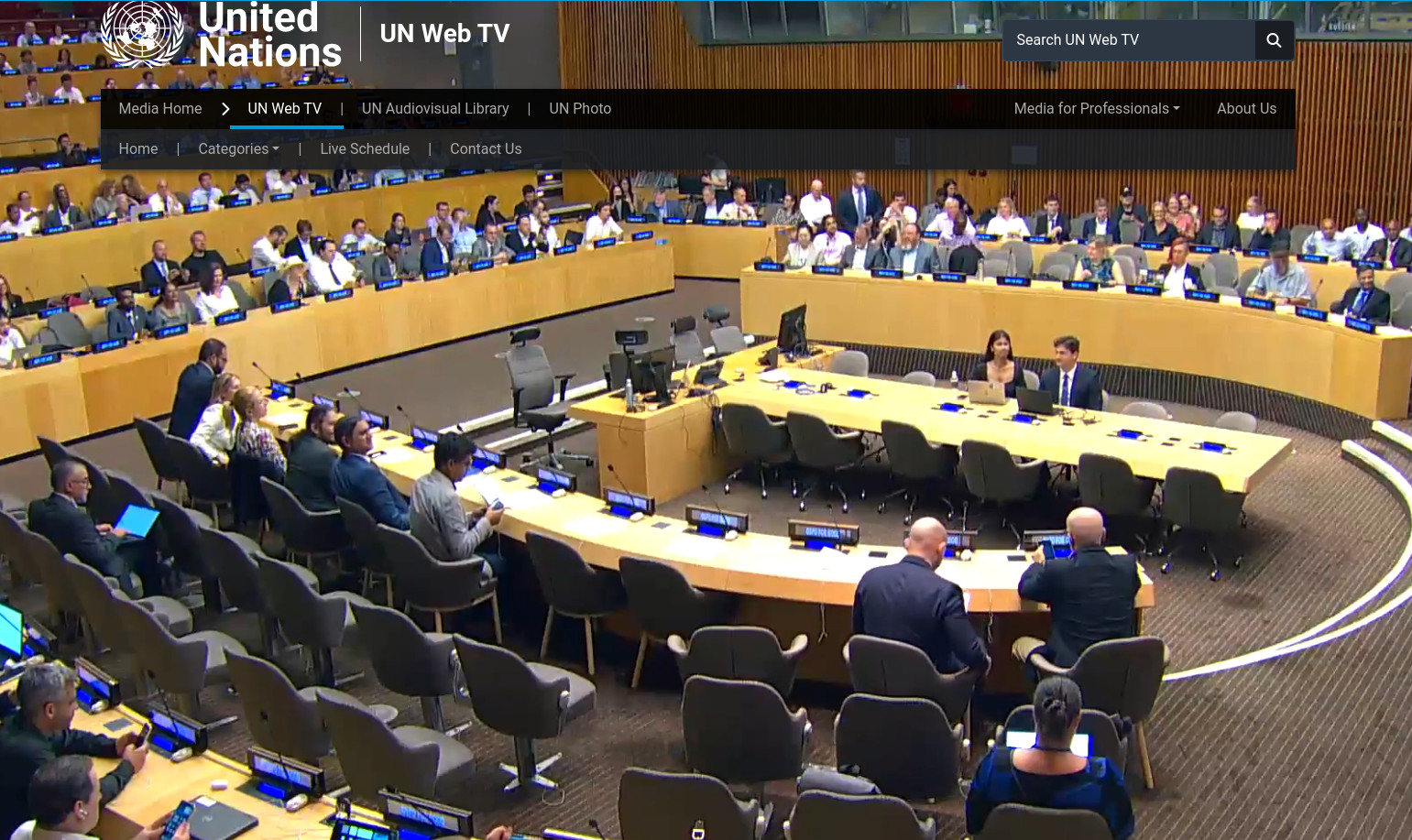Last week, 9-10 July, there was a second iteration of the conference OSPOs for Good. Building on the success of the previous year’s event, the goal of the 2024 conference was to be ‘bigger and better’ in every way, and did indeed have around ten times as many attendees as the first year, reaching about 700. The event was co-organized by the United Nations Office of the Secretary-General’s Envoy on Technology, the United Nations Office of Information and Communications Technology (UNOICT), OpenForum Europe (OFE), and OSPO++. Additionally, the German Federal Chancellery and the Government of Kenya co-hosted the event at the UN headquarters in New York. While the 2024 conference focused on the role of Open Source Programme Offices (OSPOs) as last year’s event did, this conference expanded the scope to explore how the conversation around OSPOs is enabling new forms of global cooperation around open source for good in various countries.
The event schedule was packed, and the 49 speakers and the 38 members of the organizing committees ensured that the public sector open source from around the world were well represented.
Already in the opening Philip Thigo, Special Envoy on Technology, Government of Kenya, made clear that “In the era of Sustainable Development Goals where we must end extreme poverty and also leave no one behind it almost means that open source becomes intrinsic, or integral, to everything that we do.” and that was the spirit that ran through the entire event.
Amandeep Singh Gill, UN Secretary-General’s Envoy on Technology, underlined in his opening speech the values, “Openness, of course, but there is democratization, the future of democracy. It is human centric digital development. It is values about trust and co-creation, reducing the barriers between governments and citizens. Those values are as important as the aspect of creation and innovation.” This is a reinforcement of how he at the OSOR turns 15 event pointed out that the values of open source is a reflection of the values of the United Nations. Strong supporting statements like these made ripples in the open source communities.
The topics of the talks and the panels were always centered about open source and brought up different aspects of it. Aspects like AI, Global South, the use by UN, youth, networked cities and the community were addressed, but perhaps most in center was, unsurprisingly, the involvement by governments which came up in several sessions. Here are some of those highlights.

Philip Thigo, Special Envoy on Technology, Government of Kenya.
What should governments do?
There were several sessions that touched upon this wide topic. In a keynote from Pearse O’Donohue, Director, Future Networks Directorate, DG CNECT he emphasized good reasons for embracing open source: “It avoids reinvention of the wheel. It allows adopters to check the code, increasing trust and decreasing risk of lock-in and dependency. It allows to adapt and contribute to the code for new and specific needs. It leverages communities for peer reviewing and increased quality, and it contributes to trust and sovereign agendas for both governments and companies. Those are very good reasons for governments to adopt open source solutions, but also for governments to promote the use of open source. The benefits serve directly as enablers for the SDGs.”
In the following panel, Markus Richter, State Secretary, German Federal Ministry of the Interior and Community stated, “I’m convinced that governments play an important role in this context. Of course also the economy is dealing with open source, sometimes not directly but indirectly. But when it comes to push open source products and open source solutions, especially the governments are the door opener to a market in the end. Therefore, there are some duties for governments, and we try to organize it through infrastructure and organizations.
Bastien Guerry, Head of the Free Software Unit, French Inter-Ministerial Directorate for Digital Affairs, highlighted the value open source is bringing and the importance of making the solutions easily findable: “The success here is that we are cutting costs. Instead of developing twice the same thing and maybe three times, four times, we give shortcuts to administrations to find what is existing. Everyday people say, ‘Thanks to your list, we have been able to find what we were looking for.’”
Adriana Groh from the Sovereign Tech Fund in Germany had a vision of what governments should do to enable long-term success for open source.
“It’s pretty clear that we benefit massively from the open source ecosystem, and that we cannot outsource, as governments, maintaining this ecosystem just to volunteers communities and the private sector. We need the government in this mix as well.” said Groh and listed the following actions for the government:
- Ensure security, resilience and maintenance
- Educate and train
- Support standardization
- Facilitate (co-)development of open source software
- Strengthen Digital Commons
- Procure in the public interest

Markus Richter, State Secretary, German Federal Ministry of the Interior and Community, flanked to the left by Sarah Espaldon, Head of Marketing & OperationsHead of Marketing & Operations Open Government Products, and to the right by Aeva Black, Section Chief, Open Source Security, Cybersecurity and Infrastructure Security Agency in the panel Open Source and Governments.

Slide from Adriana Groh's keynote.
Advancing the SDGs
Hinting that there will be a third meeting next year, Bernardo Mariano Junior, Assistant Secretary General & Chief Information Technology Officer, OICT, had a request for everyone to until next year always include a challenge for coming up with solutions that accelerate the SDG targets in all events.
This underlined a common view during the conference, especially from UN representatives, that the “Good” in OSPOs for Good is about using open source to reach the Sustainable Development Goals and that open source is a means to that end.

Rewatch the conference
Two full days are, of course, far too much to fit into just one news article, so if you would like to catch up yourself, the UN Web TV did a fantastic job in recording the entire conference, here are links to all streams:

The UN Web TV, showing the ECOSOC chamber and the participants at the start of the conference.

